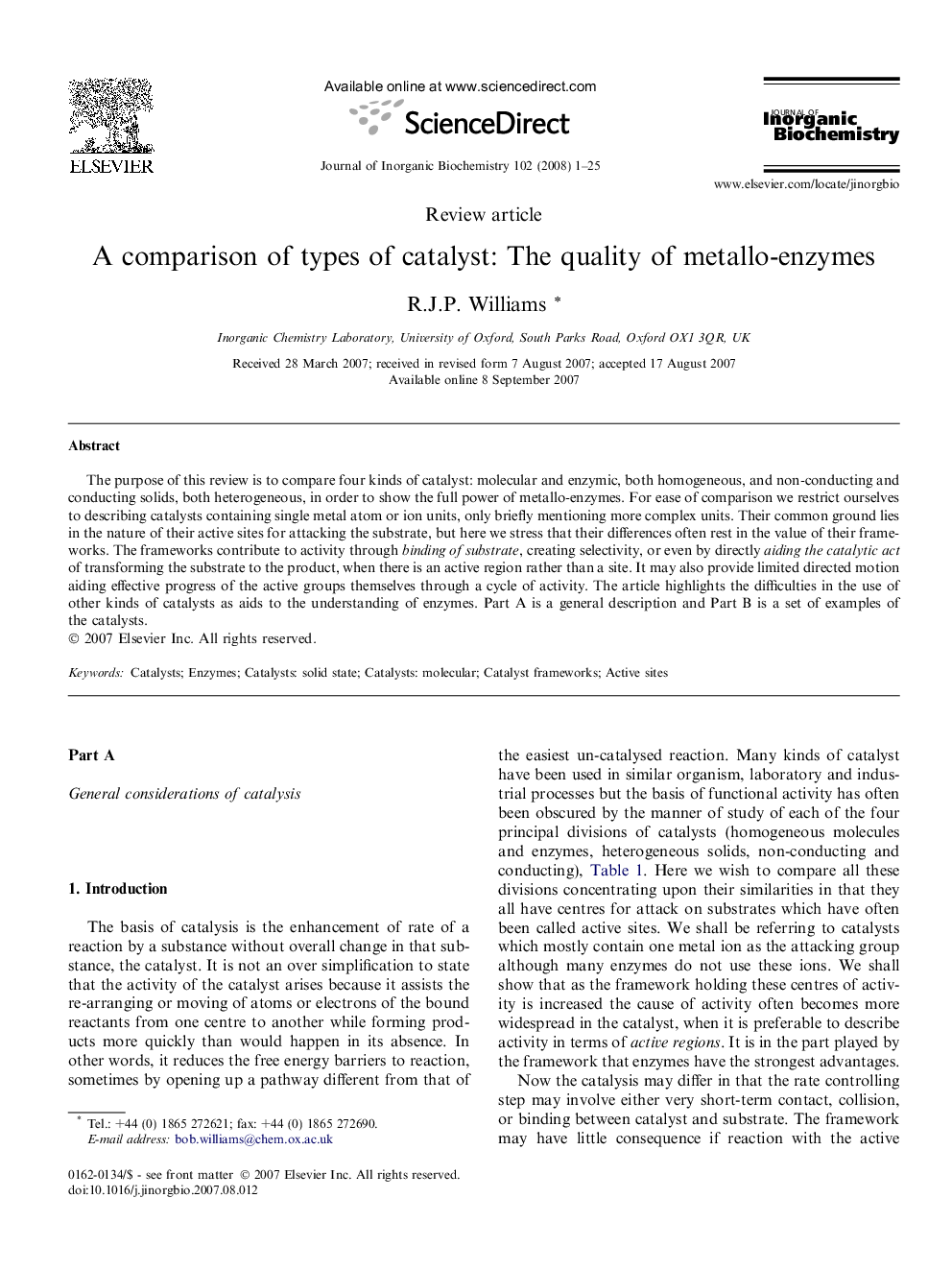| Article ID | Journal | Published Year | Pages | File Type |
|---|---|---|---|---|
| 1317003 | Journal of Inorganic Biochemistry | 2008 | 25 Pages |
The purpose of this review is to compare four kinds of catalyst: molecular and enzymic, both homogeneous, and non-conducting and conducting solids, both heterogeneous, in order to show the full power of metallo-enzymes. For ease of comparison we restrict ourselves to describing catalysts containing single metal atom or ion units, only briefly mentioning more complex units. Their common ground lies in the nature of their active sites for attacking the substrate, but here we stress that their differences often rest in the value of their frameworks. The frameworks contribute to activity through binding of substrate, creating selectivity, or even by directly aiding the catalytic act of transforming the substrate to the product, when there is an active region rather than a site. It may also provide limited directed motion aiding effective progress of the active groups themselves through a cycle of activity. The article highlights the difficulties in the use of other kinds of catalysts as aids to the understanding of enzymes. Part A is a general description and Part B is a set of examples of the catalysts.
